Robin Hutmacher
Anomaly-Aware Semantic Segmentation via Style-Aligned OoD Augmentation
Aug 19, 2023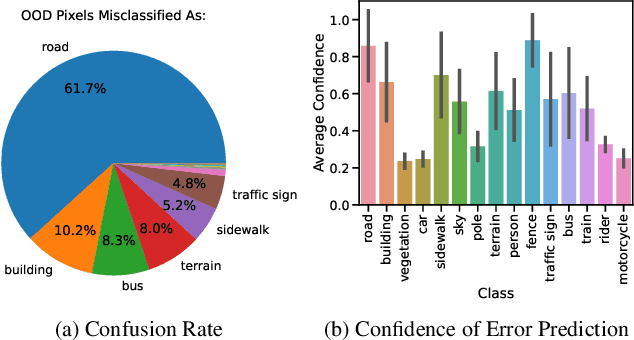
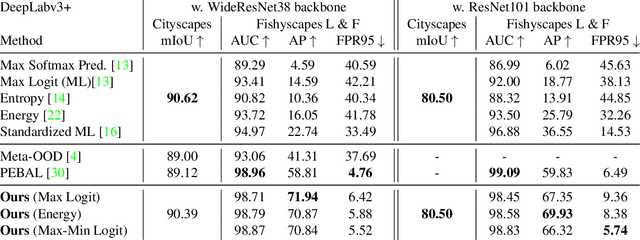
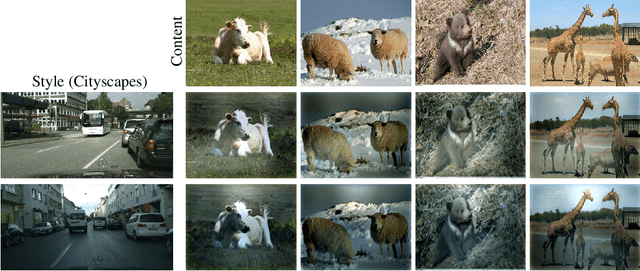

Abstract:Within the context of autonomous driving, encountering unknown objects becomes inevitable during deployment in the open world. Therefore, it is crucial to equip standard semantic segmentation models with anomaly awareness. Many previous approaches have utilized synthetic out-of-distribution (OoD) data augmentation to tackle this problem. In this work, we advance the OoD synthesis process by reducing the domain gap between the OoD data and driving scenes, effectively mitigating the style difference that might otherwise act as an obvious shortcut during training. Additionally, we propose a simple fine-tuning loss that effectively induces a pre-trained semantic segmentation model to generate a ``none of the given classes" prediction, leveraging per-pixel OoD scores for anomaly segmentation. With minimal fine-tuning effort, our pipeline enables the use of pre-trained models for anomaly segmentation while maintaining the performance on the original task.
Identification of Systematic Errors of Image Classifiers on Rare Subgroups
Mar 09, 2023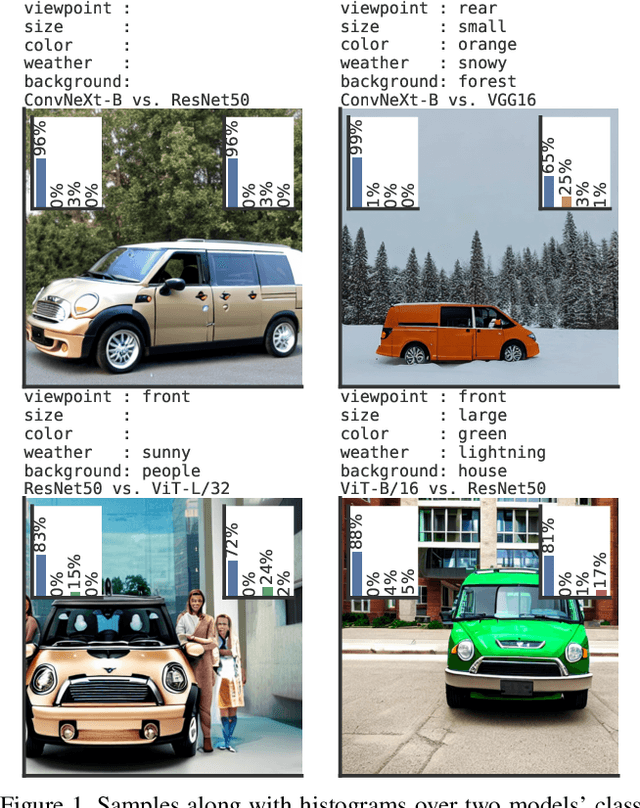



Abstract:Despite excellent average-case performance of many image classifiers, their performance can substantially deteriorate on semantically coherent subgroups of the data that were under-represented in the training data. These systematic errors can impact both fairness for demographic minority groups as well as robustness and safety under domain shift. A major challenge is to identify such subgroups with subpar performance when the subgroups are not annotated and their occurrence is very rare. We leverage recent advances in text-to-image models and search in the space of textual descriptions of subgroups ("prompts") for subgroups where the target model has low performance on the prompt-conditioned synthesized data. To tackle the exponentially growing number of subgroups, we employ combinatorial testing. We denote this procedure as PromptAttack as it can be interpreted as an adversarial attack in a prompt space. We study subgroup coverage and identifiability with PromptAttack in a controlled setting and find that it identifies systematic errors with high accuracy. Thereupon, we apply PromptAttack to ImageNet classifiers and identify novel systematic errors on rare subgroups.
Test-Time Adaptation to Distribution Shift by Confidence Maximization and Input Transformation
Jun 28, 2021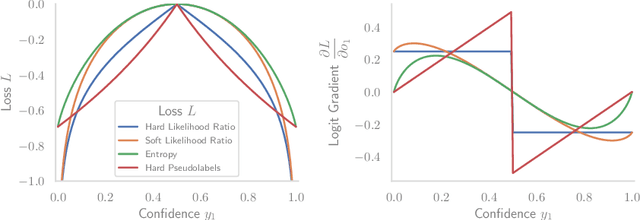


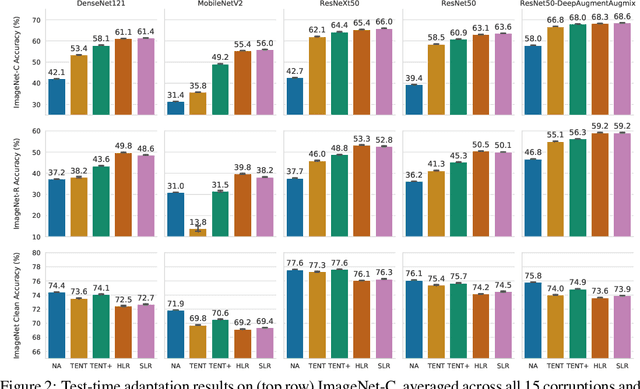
Abstract:Deep neural networks often exhibit poor performance on data that is unlikely under the train-time data distribution, for instance data affected by corruptions. Previous works demonstrate that test-time adaptation to data shift, for instance using entropy minimization, effectively improves performance on such shifted distributions. This paper focuses on the fully test-time adaptation setting, where only unlabeled data from the target distribution is required. This allows adapting arbitrary pretrained networks. Specifically, we propose a novel loss that improves test-time adaptation by addressing both premature convergence and instability of entropy minimization. This is achieved by replacing the entropy by a non-saturating surrogate and adding a diversity regularizer based on batch-wise entropy maximization that prevents convergence to trivial collapsed solutions. Moreover, we propose to prepend an input transformation module to the network that can partially undo test-time distribution shifts. Surprisingly, this preprocessing can be learned solely using the fully test-time adaptation loss in an end-to-end fashion without any target domain labels or source domain data. We show that our approach outperforms previous work in improving the robustness of publicly available pretrained image classifiers to common corruptions on such challenging benchmarks as ImageNet-C.
Does enhanced shape bias improve neural network robustness to common corruptions?
Apr 20, 2021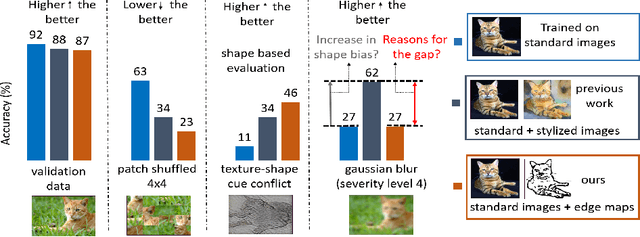


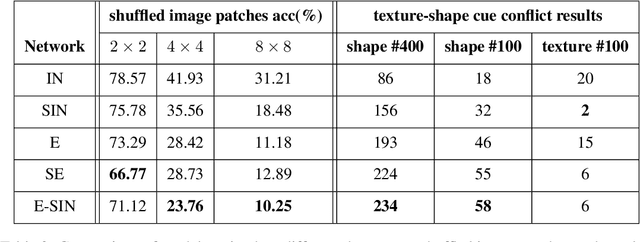
Abstract:Convolutional neural networks (CNNs) learn to extract representations of complex features, such as object shapes and textures to solve image recognition tasks. Recent work indicates that CNNs trained on ImageNet are biased towards features that encode textures and that these alone are sufficient to generalize to unseen test data from the same distribution as the training data but often fail to generalize to out-of-distribution data. It has been shown that augmenting the training data with different image styles decreases this texture bias in favor of increased shape bias while at the same time improving robustness to common corruptions, such as noise and blur. Commonly, this is interpreted as shape bias increasing corruption robustness. However, this relationship is only hypothesized. We perform a systematic study of different ways of composing inputs based on natural images, explicit edge information, and stylization. While stylization is essential for achieving high corruption robustness, we do not find a clear correlation between shape bias and robustness. We conclude that the data augmentation caused by style-variation accounts for the improved corruption robustness and increased shape bias is only a byproduct.
Meta Adversarial Training
Jan 27, 2021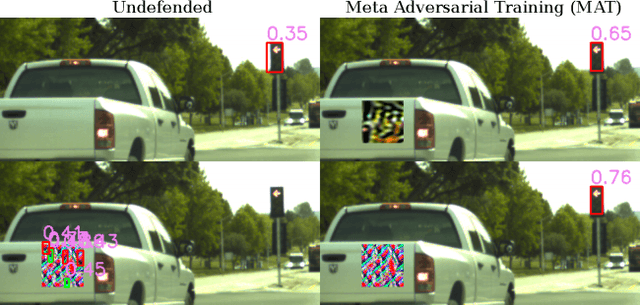
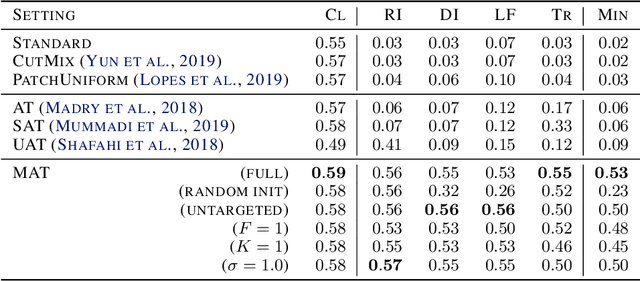


Abstract:Recently demonstrated physical-world adversarial attacks have exposed vulnerabilities in perception systems that pose severe risks for safety-critical applications such as autonomous driving. These attacks place adversarial artifacts in the physical world that indirectly cause the addition of universal perturbations to inputs of a model that can fool it in a variety of contexts. Adversarial training is the most effective defense against image-dependent adversarial attacks. However, tailoring adversarial training to universal perturbations is computationally expensive since the optimal universal perturbations depend on the model weights which change during training. We propose meta adversarial training (MAT), a novel combination of adversarial training with meta-learning, which overcomes this challenge by meta-learning universal perturbations along with model training. MAT requires little extra computation while continuously adapting a large set of perturbations to the current model. We present results for universal patch and universal perturbation attacks on image classification and traffic-light detection. MAT considerably increases robustness against universal patch attacks compared to prior work.
Increasing the Robustness of Semantic Segmentation Models with Painting-by-Numbers
Oct 12, 2020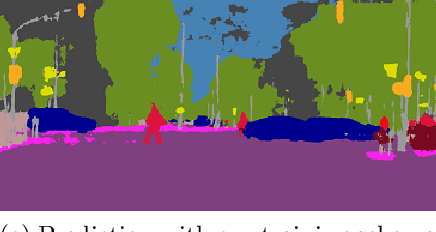


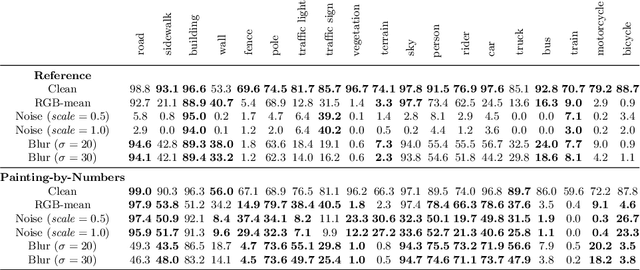
Abstract:For safety-critical applications such as autonomous driving, CNNs have to be robust with respect to unavoidable image corruptions, such as image noise. While previous works addressed the task of robust prediction in the context of full-image classification, we consider it for dense semantic segmentation. We build upon an insight from image classification that output robustness can be improved by increasing the network-bias towards object shapes. We present a new training schema that increases this shape bias. Our basic idea is to alpha-blend a portion of the RGB training images with faked images, where each class-label is given a fixed, randomly chosen color that is not likely to appear in real imagery. This forces the network to rely more strongly on shape cues. We call this data augmentation technique ``Painting-by-Numbers''. We demonstrate the effectiveness of our training schema for DeepLabv3+ with various network backbones, MobileNet-V2, ResNets, and Xception, and evaluate it on the Cityscapes dataset. With respect to our 16 different types of image corruptions and 5 different network backbones, we are in 74% better than training with clean data. For cases where we are worse than a model trained without our training schema, it is mostly only marginally worse. However, for some image corruptions such as images with noise, we see a considerable performance gain of up to 25%.
 Add to Chrome
Add to Chrome Add to Firefox
Add to Firefox Add to Edge
Add to Edge